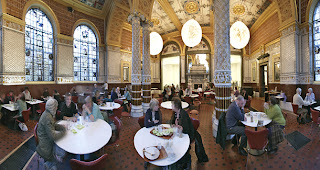Two weeks ago, the London’s paper, the Evening Standard, launched an inspiring and successful campaign to encourage and help Londoners to read.
The Get London Reading campaign was prompted by the realization that in this city full of bookshops, libraries, publishers and writers, one in three children grows up without a single book of their own and one million people cannot read. “This is a betrayal of our children because reading is an essential tool for life,” says Editor Geordie Greig.
The paper has joined forces with Volunteer Reading Help, a charity that trains ordinary adults to go into London's most deprived primary schools to provide one-on-one reading support for struggling pupils. The charity does a tremendous job, but needs more volunteers and more donations. The Evening Standard is urging its readers to be part of the solution: “Volunteer today, donate today - and change lives.”
Over the past two weeks, the Evening Standard has published shocking new figures exposing illiteracy in London:
• 1 in 4 children in London leaves primary school at 11 unable to read or write properly
• 1 in 5 leaves secondary school without being able to read or write with confidence
• One million (or one in six) working adults in the capital cannot read with confidence. Nationally, five per cent of adults in England have literacy skills either at or below the level of a seven-year-old
• 40 per cent of 11-year-olds from inner-city primary schools have a reading age of between six and nine when they start secondary school
• 1 in 5 pupils at inner London schools has special educational needs, such as dyslexia
The paper’s chief features writer, David Cohen, talked at a recent Freelance Media Group lunch at the Groucho Club about the Get London Reading campaign.
He shared some of the moving stories he uncovered while reporting on the campaign, like that of the little girl who brought to class the Argos catalogue (home and general merchandise retail) when a teacher asked his pupils to bring in a book from home. 'It's the only one we've got,” said the nine-year-old.
The paper also featured many people – some highly successful – who explained how being unable to read affected their self-esteem and life. One of them, poet Benjamin Zephaniah, who is dyslexic, talked of how dyslexic people tend to go "one of two ways", conquering their fears and flourishing, or ending up in jail. And a multi-millionaire property mogul spoke for the first time about his “darkest secret” – that he cannot read – to expose the depth of the illiteracy problem in London.
The campaign has generated huge support from politicians, writers, celebrities, businesses and the general public.
So far, they have raised £145,000 – enough to fund 290 volunteers who will read one-to-one to 870 children.





